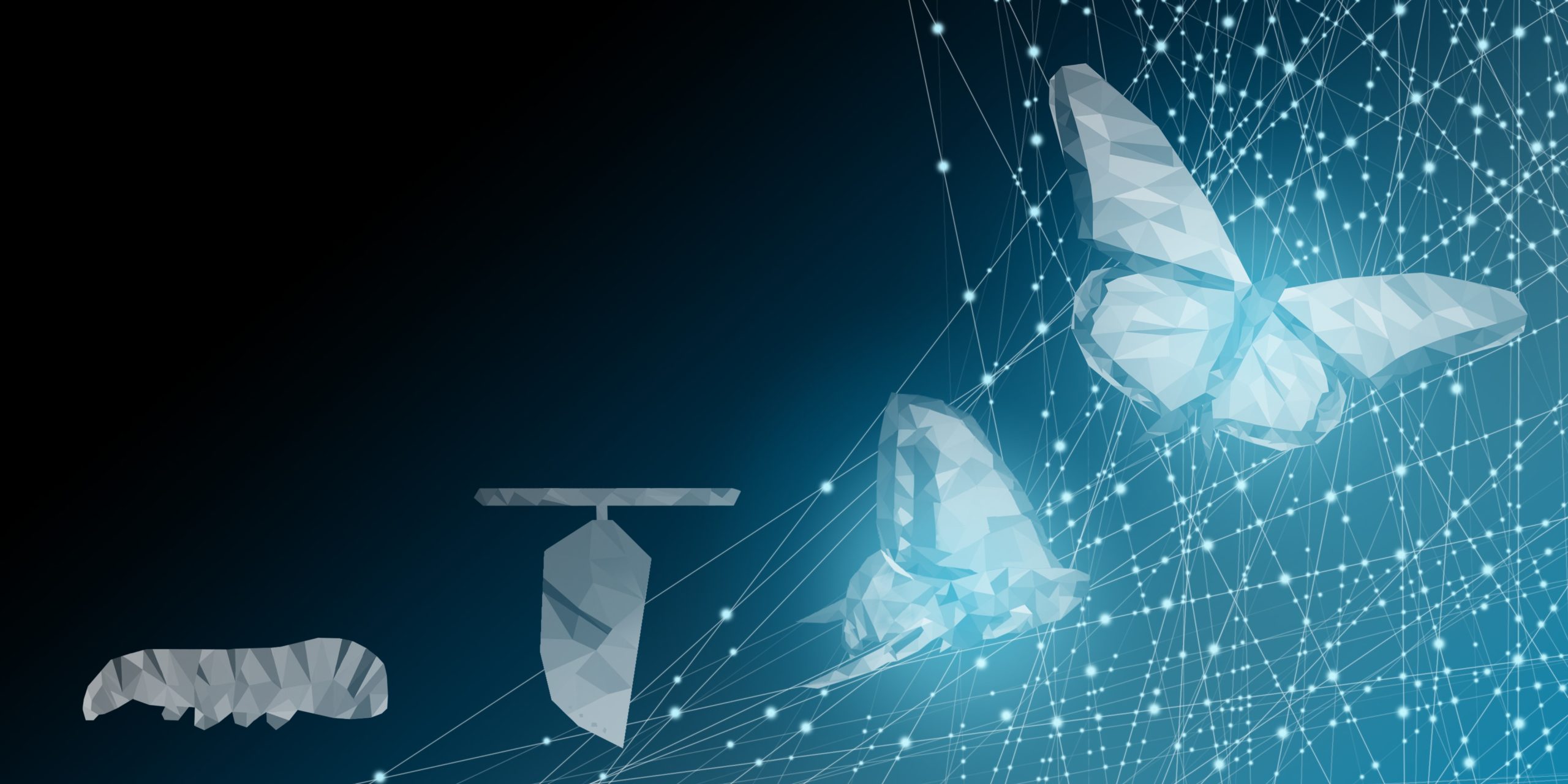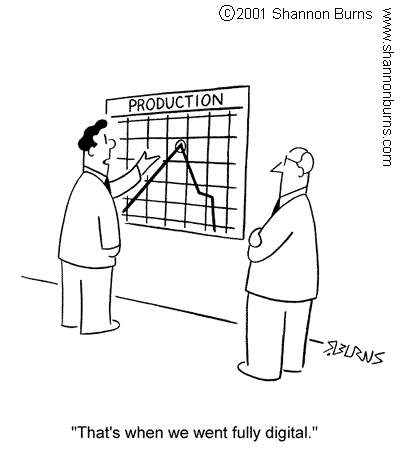The Twice Born
Jaspreet Bindra

(This article previously appeared in ndtv.com under the title ‘Turning your company digital in India’.
Google, Facebook, Amazon, Uber and Airbnb. Flipkart, InMobi, Snapdeal, if we are talking from an Indian context. Whenever conversations veer to great, innovative, highly-valued companies, these are the names that inevitably come up. The business newspapers, influential blogs, myriad tweet-streams and the conference-seminar talking heads – they all gush about how these companies are changing the world around us, and how they are redefining management and business-model paradigms.
All this and more is true. However, when you look a little closely at these entities, you realise that all of these companies are technology-based, digital companies. If you look a little more closely, you will realise that these companies were so from the day they were born: what I call the Born Digital companies.
They have known no other existence. From Day Zero, their products have been digital in nature – apps, websites, ecommerce. Whatever part is physical (goods delivered, salesforces, etc.), is all digitally-enabled. All customer interfaces are primarily digital – whether be on the web, or the phone, or across any other device. Physical or voice interfaces are resolutely avoided (when was the last time you spoke to a Google customer service agent?). The processes supporting these companies operations have been digital from day zero: apps for sales forces, digital payments, virtually no paper. Short, crisp processes with huge empowerment, and artificial intelligence and algorithms baked in from the very beginning. Significantly, the business models are digital too: ecommerce, SaaS, freemium, ad-supported, bitcoins… There are hardly any physical assets: the companies seem to be based in the cloud, or as a token to physicality, sprawled across prime acreage in the Valley. Most importantly, the people who founded and comprised these companies are true blue digital natives: young, hoodie-clad, algorithm-spouting college dropouts with smartphones as natural extensions of their arms; people who could code before they could converse.
These companies dominate our conversations and our mind-spaces; the fact is that they are a tiny though very influential part of the global economy, the apocryphal 1%. However, much like in the Occupy Wall Street famed movement, there is the other 99%. These are the ‘real’ or the ‘old’ economy companies: behemoths like Walmart and GM and Boeing and GE. Big Pharma, Big Finance, the mining and agricultural giants, the gigantic oil companies and the shipping giants.
They are different. Their products are physical and tangible – many times, you can pick them up and smell them. In many cases, the processes which power their operations are ‘legacy’, having existed for decades, but with incremental improvements done to them every year. Their digital customer interfaces, while highly sophisticated, are secondary to their physical touchpoints – the stores, the factories, the warehouses. The business models are usually traditional and very profitable. The people are traditional too – experienced managers and leaders, great MBAs and highly-educated PhDs.
Here, if you look closely, you find one common thing: Most of them want to Become Digital. Many of them, in fact, have started on this journey, a very few of them have transformed themselves digitally and have now the best of both worlds – the physical and the digital have melded seamlessly into each other to create a new, powerful hybrid – the ‘phygital’ company.
This is what omnichannel in retail is all about, where the customer experiences a seamless, continuous interface between her phone, PC, the actual store, and the iPads in the store. The actual fulfilment can be at the store, or at home, or at a pickup point. At the backend, the entire inventory, offers, pricing, displays are all the same, irrespective of the medium. Macys, Crate and Barrel, Walmart are leading the charge here. Phygital is what Starbucks has done: gotten in a Chief Digital Officer, who has stitched up the physical and digital experiences seamlessly. So has Burberry: before Angela Ahrendts, the erstwhile CEO and now Apple retail queen, not a single luxury brand embraced digital, fearing that the experience will not match up to the store. She changed all that, and made the brand appeal to the younger, digital-savvy crowd while retaining the exclusivity, and the pricing. Even the quintessential old-world colossus like GE has embraced the digital world.
As its engines power thousands of aircrafts across the skies, they keep on sending every conceivable piece of data back to the server clouds – the temperature, the RPM, the power, the turbulence, airstream data, and the second -by-second fuel utilization. GE’s analytics engines analyse the data in real time, and figure out the most efficient way for the engine to run, and thus have saved billions of dollars of fuel for their customers. Nike has done this very well – mated a conventional shoe to a fitness band and created running histories and data profiles for their customers. The big hotel chains have embraced digital, with in-app room selection, keyless entry using a mobile phone, AI-powered dynamic pricing and a thousand other ways.
A few companies in India are embracing the digital world too. Tata Housing now sells hundreds of houses online on property aggregator sites. Asian Paints has been at the forefront, quietly digitizing their supply chain and their sales forces, making it extremely nimble and cost-efficient. At the Mahindra Group itself, Mom&Me has merged with BabyOye, the online baby etailer, and now renamed the entire company BabyOye. M2all.com is a superstore of all products of the Mahindra Group. Each company in the group is running multiple pilots – creating digital products, mobility presences, experimenting with disruptive digital business models.
Becoming Digital is not only about creating an app or a website, or even a new digital product. It is not only about embracing ecommerce, or a cloud-based SaaS-enabled CRM (customer relationship management). It is about a wholesale, long-term change, a journey which will take three to five years, and will perhaps never end. It is a continuous change process of reacting to customer needs on a daily basis, and of always staying one step ahead of the competition. What the digital transformation does is that it makes a company react and change very fast, and achieve new product-market fits almost instantaneously.
Changing the customer interface is just the visible 5% of the effort – the real grunt work is at the backend. It is about digitally-enabling processes and simplifying them considerably. It is about piloting new digital business models and completely new ways to make money. It is sometimes about upending organisation structures, and getting in new people with new skills.
The companies which transform themselves are like the Brahmins – the twice born. The most successful example of this Brahmanism is the most highly-valued, most-admired and the most profitable company in the entire world. It was born as another gadget-selling company, and it successfully sold a large number of computers through physical stores. It did not change, and did not embrace the new world, and it almost died. It was then resurrected and transformed, and has come back as the biggest purveyor of digital goods, with global digital platforms powering them, seamlessly sold through digital and offline stores which look, feel and act exactly the same. The company we are talking about is Apple, and few people realise how rooted it is in the digital world, and how almost everything that it does is digitally enabled. The stickiness of the iPhones and iPads has to do more with the App Store and iTunes than with its Gorilla Glass and the burnished aluminium backs. It is the seamlessness of the experience between digital and physical which still makes thousands of people line up outside their stores and buy the latest overpriced offering.
And as you stand there, waiting for your turn, do remember that this is what a digital transformation of your own physical company can do.
(The views expressed in this article are purely personal)


